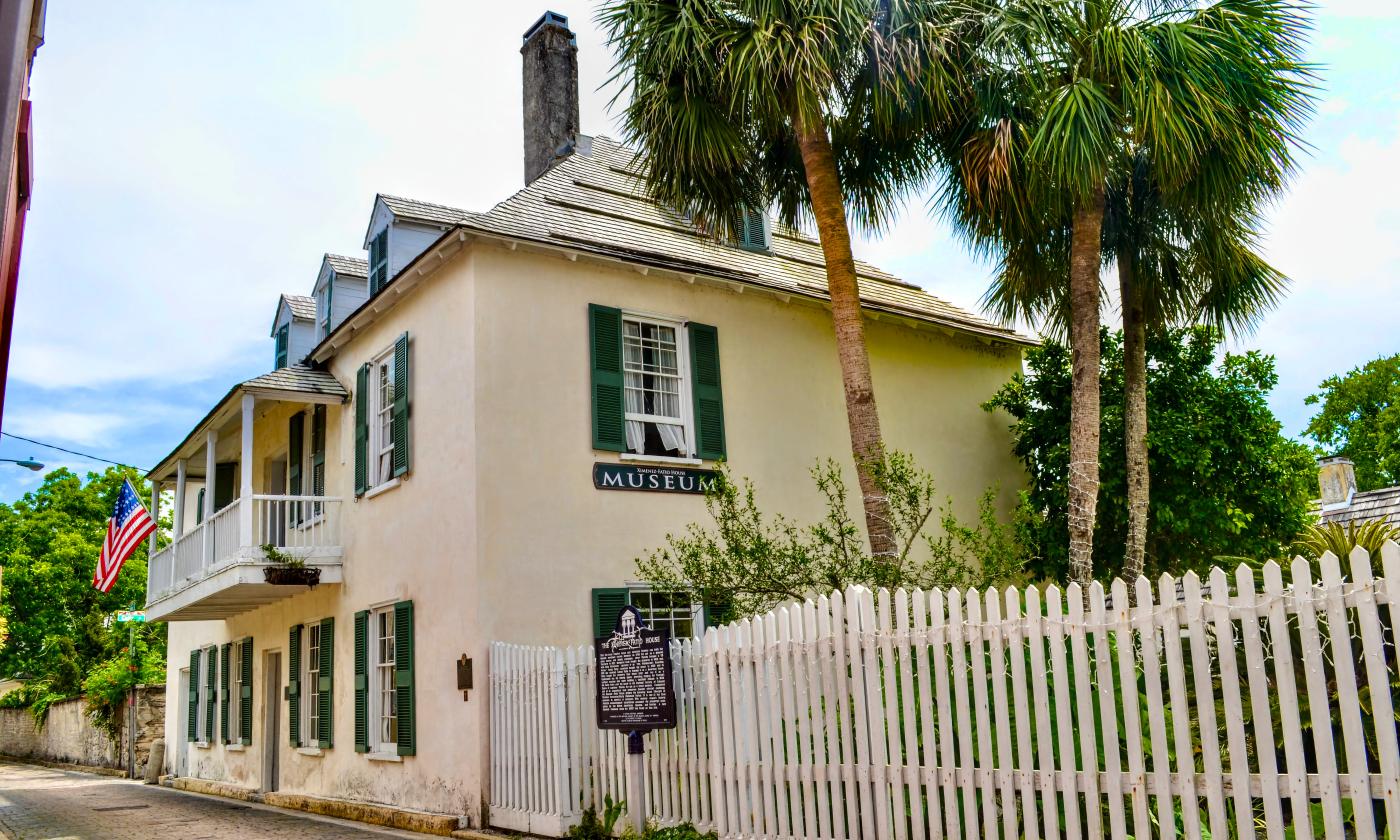Ximenez-Fatio House
Ximenez-Fatio House
Built in the Second Spanish Period
While residing in this house on Aviles Street, the oldest platted street in America, Ximenez and his wife, Juana Pellicer, operated a general store and billiards hall. Ximénez enslaved at least one person, a biracial woman named Rosa. (Read her Historical Person profile below.)
Tragedy struck the Ximenez family in the early 1800s with multiple deaths, including Juana and two of their children. Andrés Ximenez passed away in 1806, leaving Rosa to be leased out to other families. The house was sold in 1821 by the Ximénez children, and Rosa's fate remains unknown.
Owned by Women in the 1800s
The first American owner of the building was Mrs. Margaret Cook, a widow from Charleston, South Carolina, who transformed it into a boarding house. She purchased the site from the Ximenez heirs and opened her boarding house in the 1830s. Both Cook and subsequent owner, Sarah Petty Anderson, enslaved a staff of Black people who were crucial to running the boarding house efficiently.
Miss Louisa Fatio, a highly educated businesswoman, took over the house in 1851 and continued its operation even during the political upheavals of Florida's secession and the Civil War. As the conflict resolved and enslaved individuals became free within Union territory, Fatio transitioned from an "owner" of "slaves" to an employer of free individuals like Louisa and Louis Williams, who worked at the boarding house.
The boarding house gained literary attention when Constance Fenimore Woolson wrote about her stay, featuring a young Black man, probably Louis Williams. A photograph from 1875 captured the silhouette of both Williams and Fatio's other guests.
Flagler Ends the Boarding House Era
As St. Augustine saw the rise of larger hotels by Henry Flagler, small boarding houses lost popularity. The Ximénez-Fatio House evolved into tenement apartments and storefronts.
The Dames Found a Museum
In 1939, the National Society of the Colonial Dames of America in Florida purchased the property and transformed it into a museum, showcasing the Boarding House Period. It is possible that this is the oldest women's history museum in the United States. The museum, named after both Ximénez and Fatio, educates visitors about the house's complicated long history. Notably, it features an attic exhibit focusing on Black history and urban slavery in St. Augustine.
Visiting the Ximénez-Fatio House Museum
Today, the Ximenez-Fatio House Museum conducts programs and exhibits that delve into the property's rich and sometimes challenging history. It is still owned and operated by the Colonial Dames. The museum hosts an annual Black history tour, entitled "I Lived Here, As Well," every February, where historical interpreters portray enslaved and free Black individuals associated with the house, offering a first-person glimpse into the past.
This profile was written by Cheyenne Koth Leahy with the assistance of Taryn Rodriguez-Boette, Archivist of the Ximénez-Fatio House Museum. The information above was curated from the museum's archival material.


